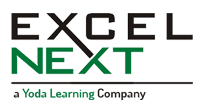Storytelling using data involves using data, visualizations, and other forms of data representation to communicate a message or tell a story. It is a way of using data to engage an audience and communicate insights in a clear and compelling way.
However, storytelling using data is a powerful way to communicate insights and engage an audience with data. By carefully selecting the right data, visualizations, and narrative, you can effectively tell a compelling story using data.
With the aim of equipping with this Ninja-level power. We have developed a 1-day workshop, which has been conducted at prestigious companies, including PwC, EY, ITC, Coca-Cola, Flipkart, Asian Paints, etc.
Outline:
- A: Use Google to find sector-wise trends on latest industry charts | 10 mins.
- → Learning Objectives: Get context- specific (sector, business, KPI) ideas on Charts:
- How to use Google’s Advanced Search tags to see the latest industry trends on charts
- B: Essential chart elements & settings | 60 mins.
- → Learning Objectives: Customise the chart settings and options to make it client-ready.
- Anatomy of a Chart:
- Chart Title (metric name) vs Slide Title (inference)
- Writing a title for figures
- Writing a title for a slide (also called strapline)
- Vertical vs Horizontal Axis, Axis Titles, Data Labels, Gridlines, Legends; Fill & Outline
- Source & Footnotes
- Exercise: Get to know all the essential Chart settings:
- Sort the data set for easy comparison (Desc / Asc Order)
- Create a ‘Column Chart’
- Change Chart Type – Horizontal ‘Bar Chart’
- Column Chart vs Bar Chart – Why?*
- Format Axis – Categories in Reverse Order
- Format Data Series – Reduce Gap Width & Best Practice
- Add Data Label (numbers) – 3 ways
- Data Label – Inside Base vs Outside End
- Change color of all or one the series
- Add a thin border, dashed line to one of the series
- Convert Y-axis ‘jump’ values = 0, 50, 100 …. 200
- Remove Gridlines & add Primary Major Horizontal Gridlines
- C: Essential Charts - 1 | 100 mins.
- → Learning Objectives: Focus on business charts that are commonly used in Consulting.
- Basics of 2 axis Charts – Primary Axis (Column) & Secondary Axis (Line)
- Thermometer Chart & its use cases
- Automatic color of negative data series (column)
- Waterfall Chart – 1
- De-mystifying the ‘Select Data’ option
- Stacked Column
- 100% Stacked Horizontal
- Re-basing / Indexing data to a base of 100 for comparing time-trends (Line)
- D: Concept of Parallel Chart or Side-by-Side Chart | 45 mins.
- → Learning Objectives: Focus on how to present multiple data points without adding clutter.
- Three Types using industry examples – EY, McKinsey
- Exercise – Create a parallel chart incl PowerPoint shortcuts & Data handling tricks
- E: Alternatives to Pie Chart | 45 mins.
- → Learning Objectives: Explore better alternatives to Pie Chart.
- Each pie chart should have 100% = “metric being shown” on the top right hand corner
- Horizontal Bar
- Treemap
- Waterfall Chart – 2
- Donut
- F: 7 Storytelling Strategies | 60 mins.
- → Learning Objectives: Learn from best industry practices & consulting reports (updated Aug’2022)
- 7 strategies to add impact to text / table heavy slide
- Symbols (Webdings, Wingdings) – criticality, % completion, tick, legends for lengthy names
- Highlighter (dashed outline)
- De-Highlighter (white tracing paper) – semi-transparent white shape
- De-Highlighter – greyed out text
- Clustering using curly braces shape (75%:25%)
- Number Pointers for Navigation & Flow of reading
- Callouts
- Essential – PowerPoint Shortcuts to create new visuals
- Exercises – Overlapping circles, Waffle Visual
- G: Quick Theory - Hygiene Factors to present Table | 30 mins.
- → Learning Objectives: Overview of presenting tabular-data better.
- How to format tables (text alignment, borders, shading, distribute rows/columns)
- Every table needs to have serial numbers on the left
- Every table needs to have a row for totals
- Tables /Charts need to be sorted on the basis of relevant logic (alphabetic order is not a logic) + How to Sort
- Every table/chart/figure in a slide must have a title, left aligned, which captures:
- – Name of metric being monitored and analysis being shown
- – Time validity of data
- – Absolutely no inference statement in the Table title (the slide title needs to capture that or these need to highlighted in a callout)
- Source needs to be mentioned in each slide
- Each number mentioned must have a unit
- No acronyms without reference at the bottom (like Legends)
